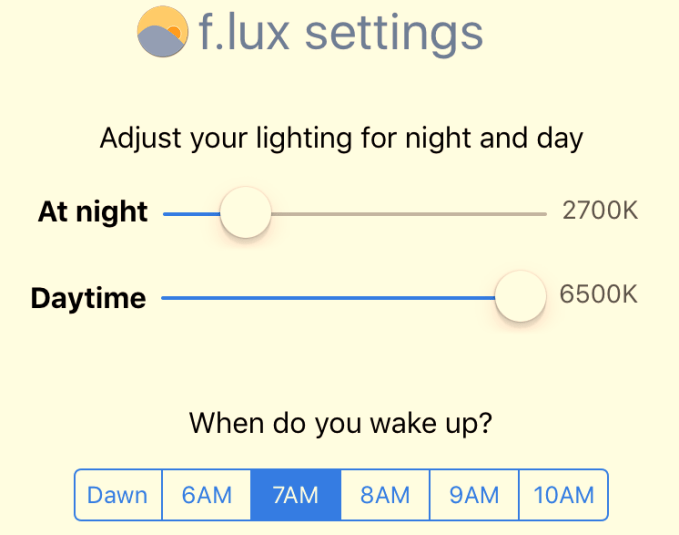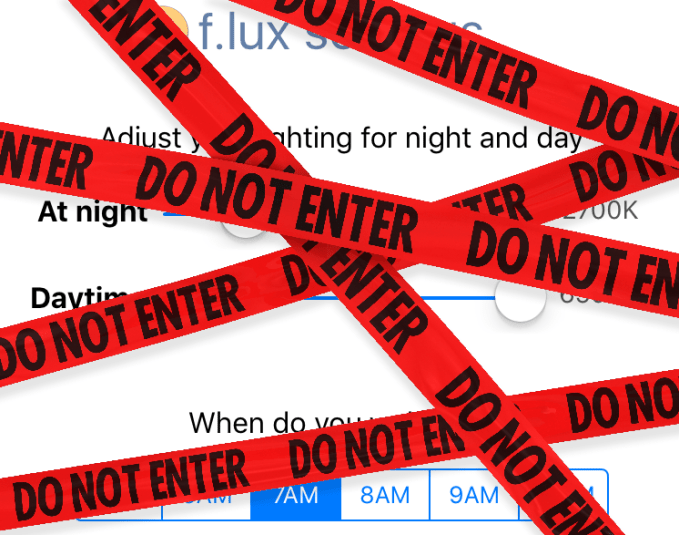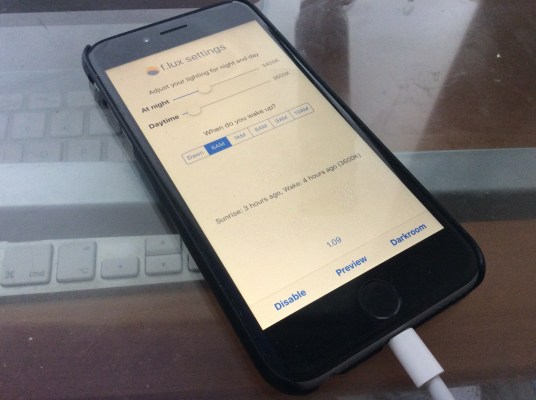As many noted when Apple released its beta version of iOS earlier this week, one of the mobile operating system’s newest features, a nighttime reading mode with reduced blue light emissions, looked awfully familiar. The ability to adjust the screen brightness on iOS devices is something software maker F.lux has been developing for years. Its technology, which even briefly worked on iOS without jailbreaking, lets users adjust the screen’s lighting for daytime and nighttime use.
Now that a similar technology which Apple dubs “Night Shift” is an official feature in iOS 9.3, F.lux is calling on Apple to allow its app back into the iTunes App Store.
In case you’re unfamiliar with the problem: studies have shown that blue light keeps people’s pineal gland from releasing melatonin – something which normally occurs a couple of hours before bedtime. This hormone reduces alertness and helps signal to the body that it’s time to sleep. But as we cuddle up with our smartphones and tablets before bed these days – as opposed to books or magazines – we’re inadvertently making it more difficult on ourselves to fall asleep.
F.lux also notes that research points to links between this exposure to light at night and cancer, referencing reports that state disruption of our circadian rhythms by way of night shift work or disturbed sleep-wake cycles may lead to an increased risk of breast cancer and other diseases, for example.
The company was among one of the original pioneers in the software space with a solution to this problem. Its app, originally designed back in 2009, now works on a range of devices, including Mac OS X, Windows, Linux, and iOS devices, if they’re jailbroken (meaning, a way to hack the device to run unapproved applications.)

In November 2015, the company released an open-source version of its iOS application, which was a brief, but welcome respite from the need to jailbreak your device in order to take advantage of its software. The iOS app offers settings that adjust your screen’s color temperature. Unfortunately, F.lux had to quickly pull its download link, as the app was in violation of Apple’s Developer Agreement.
The problem with side-loaded version wasn’t really the method of installation – Apple now lets anyone with an Apple ID load apps directly from Xcode – but rather with F.lux’s use of private APIs.
However, with “Night Shift” now officially supported as an iOS feature, F.lux believes its app should be allowed back into the App Store. That is, Apple should open up access to those private APIs so that the app is no longer in violation of Apple’s terms.

A good handful of iOS users agree – following the ban, over 5,000 F.lux fans signed a petition asking Apple to reconsider its position.
It’s a reasonable request, now thanks to “Night Shift.” If Apple is officially offering a feature that will automatically shift the colors in its display to the warmer end of the spectrum at a given time, it seems there would be little harm in allowing a third-party to build on top of that functionality to offer a more advanced feature set to power users.
Of course, while F.lux deserves credit for being an early solution provider for this issue with blue light emissions from our computing devices, addressing the problem is something that the device makers are now solving for themselves. Amazon, for example, recently rolled out a similar “Blue Shade” feature for Kindle devices, and Google introduced a blue light filter in its Play Books application just last month, too.
In addition, it’s worth noting that there are a number of third-party applications that offer the same blue light reduction functionality on the Google Play store today, indicating there is a market for third-party software in this space.
However, it’s not uncommon for Apple to borrow ideas from the jailbreak community, having taken “inspiration” from a number of unapproved tweaks in years past, to do thing like enhance notifications, implement Wi-Fi sync, add support for widgets and dynamic wallpapers, improve multitasking and app organization, and more.
Image credit, top: 9to5Mac.com
